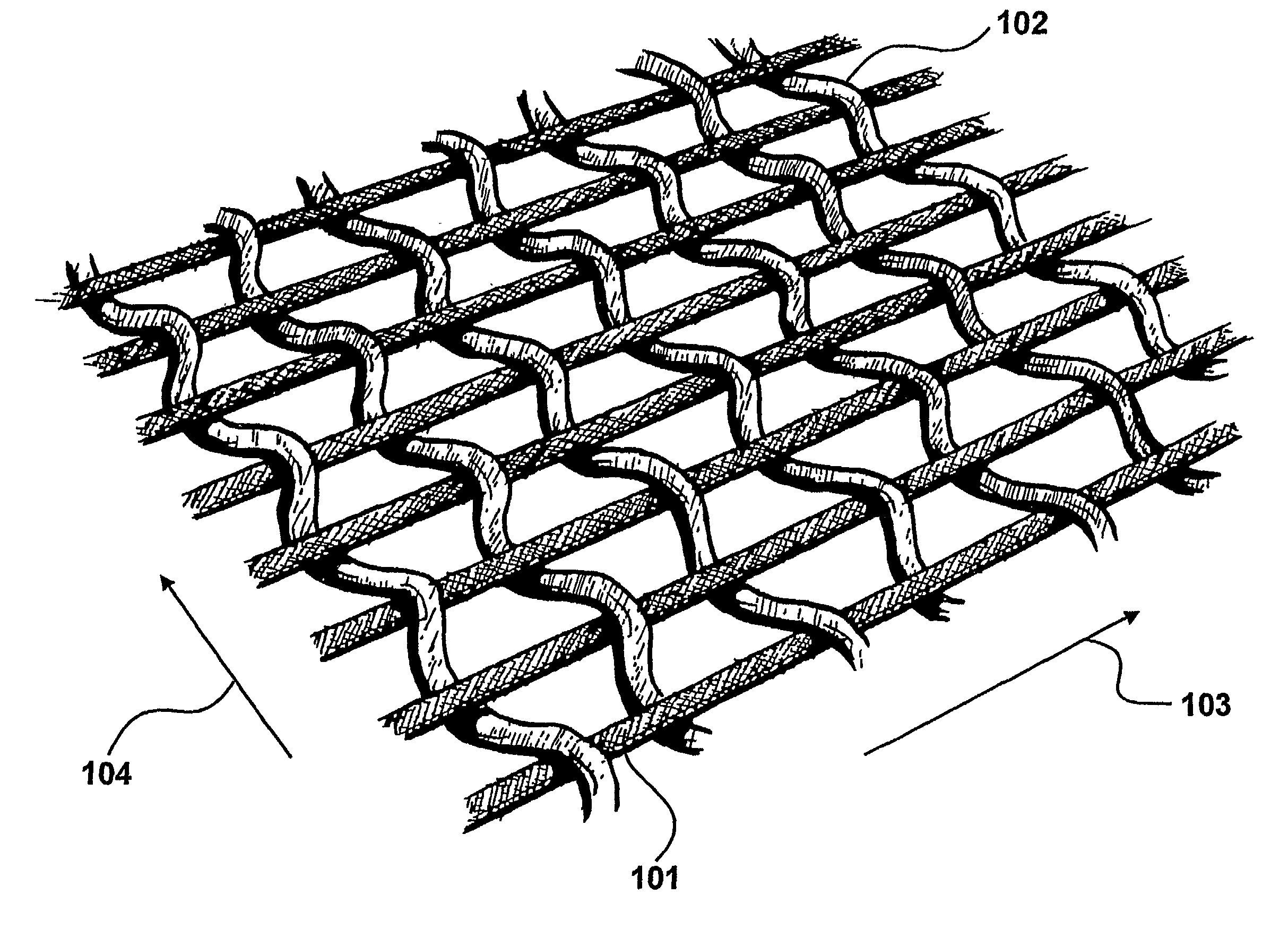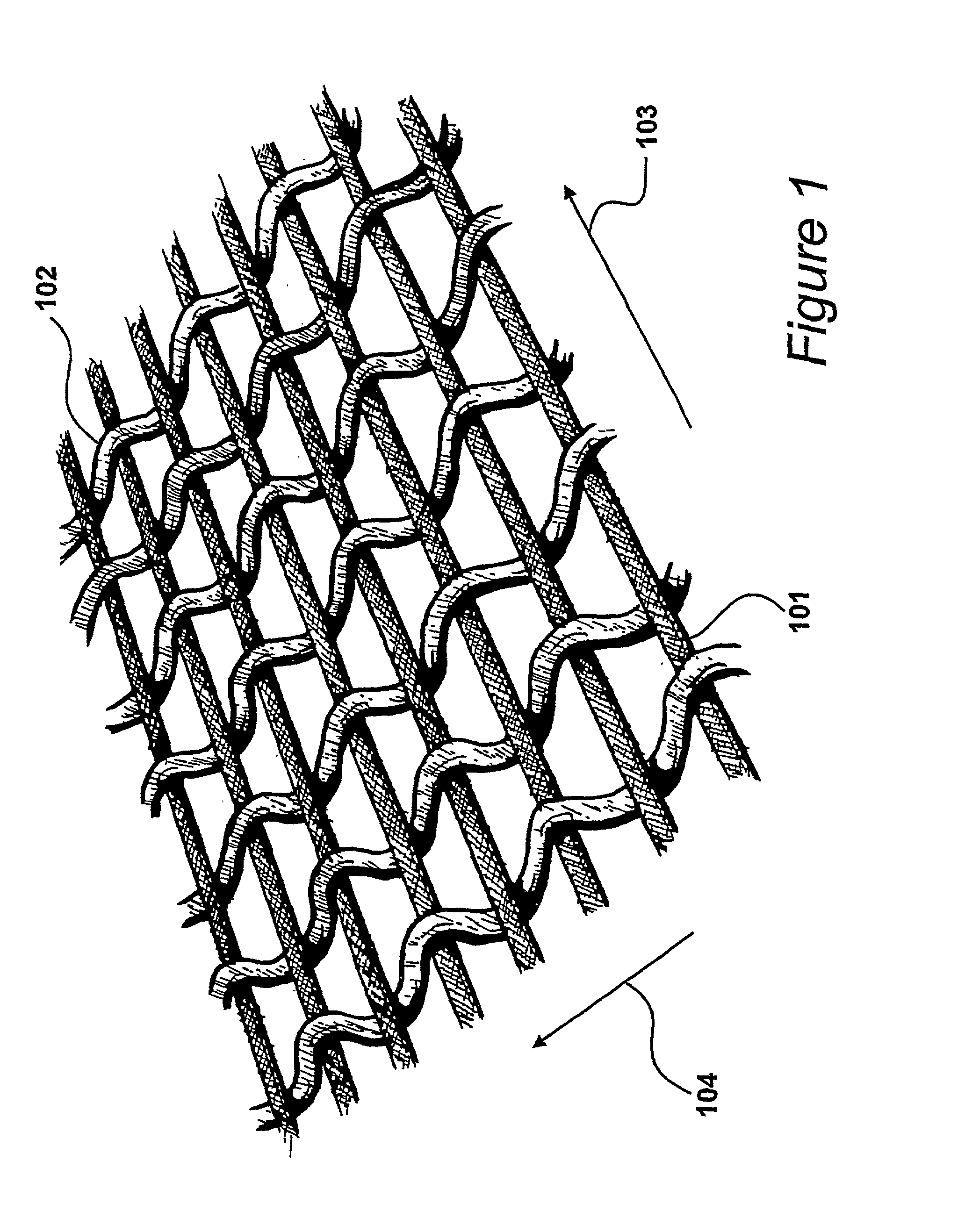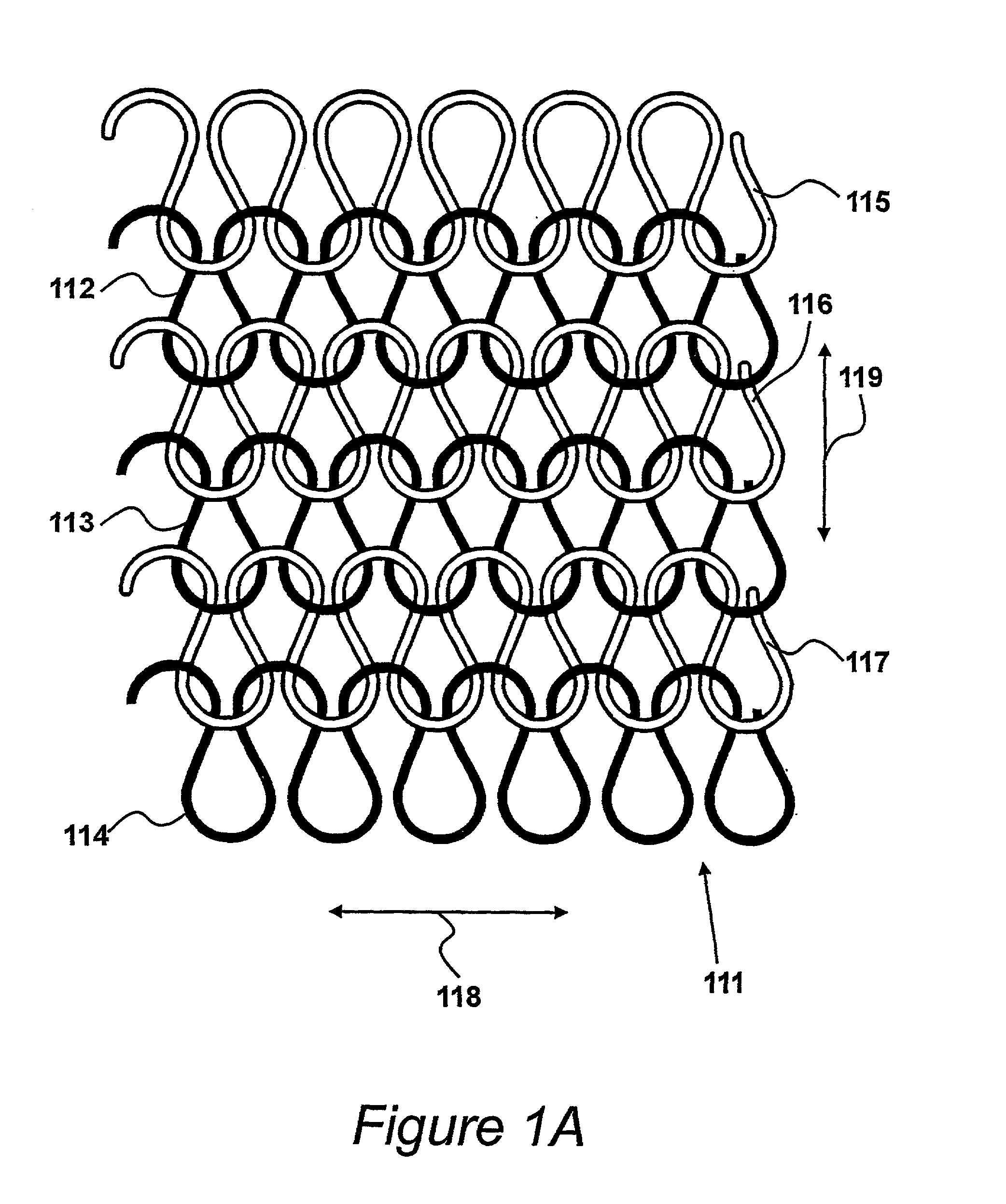Detector constructed from electrically conducting fabric
a technology of electrical conductors and electrodes, which is applied in the direction of resistors, knitting, conductors, etc., can solve the problems of limiting the application area of electrodes, unable to identify two or more separate touches, and significant construction costs
- Summary
- Abstract
- Description
- Claims
- Application Information
AI Technical Summary
Benefits of technology
Problems solved by technology
Method used
Image
Examples
Embodiment Construction
FIG. 1
[0040]A woven fabric is shown in FIG. 1 of a type suitable for application in a detector made in accordance with the present invention. The woven fabric has a warp made from single filaments of carbon coated nylon-6, available from BASF under the trademark “RESISTAT” and identified by the designation F901. F901 is a fibre produced primarily for use in static dissipation applications in fabrics. Many different sizes of filament may be employed, dependant upon the requirements of an application, and in this example the size of the filaments is twenty-four decitex, (twenty-four grams per 10,000 m) presenting a diameter of fifty-two micrometers.
[0041]Weft fibres 102 are fabricated from a polyester yarn of similar dimensions to the warp. These polyester weft yarns are non-conductive such that the resulting fabric is conductive along the warp, in direction 103 but not conductive in the orthogonal weft direction, as illustrated by arrow 104. Thus, due to the nature of the weave of th...
PUM
| Property | Measurement | Unit |
|---|---|---|
| Length | aaaaa | aaaaa |
| Force | aaaaa | aaaaa |
| Pressure | aaaaa | aaaaa |
Abstract
Description
Claims
Application Information
 Login to View More
Login to View More - R&D
- Intellectual Property
- Life Sciences
- Materials
- Tech Scout
- Unparalleled Data Quality
- Higher Quality Content
- 60% Fewer Hallucinations
Browse by: Latest US Patents, China's latest patents, Technical Efficacy Thesaurus, Application Domain, Technology Topic, Popular Technical Reports.
© 2025 PatSnap. All rights reserved.Legal|Privacy policy|Modern Slavery Act Transparency Statement|Sitemap|About US| Contact US: help@patsnap.com



